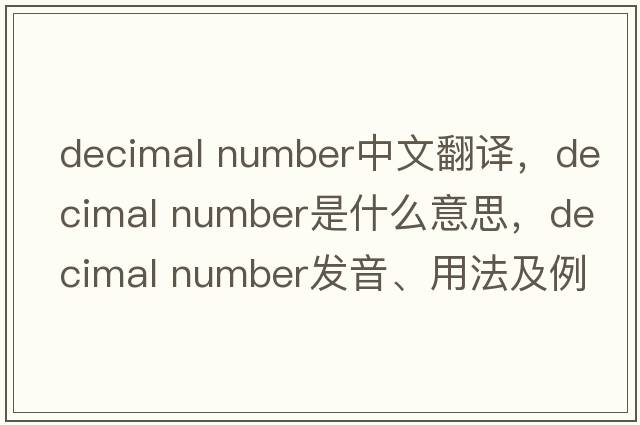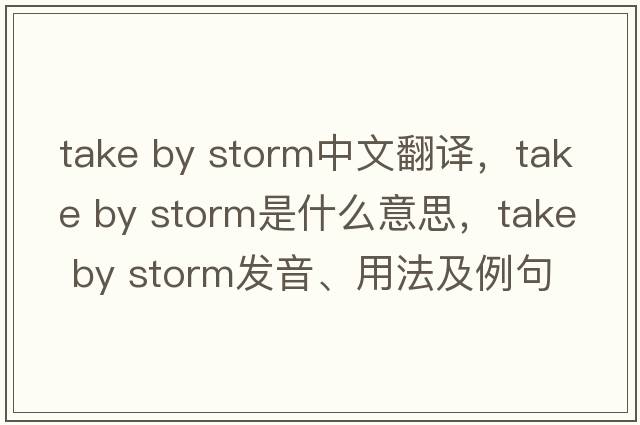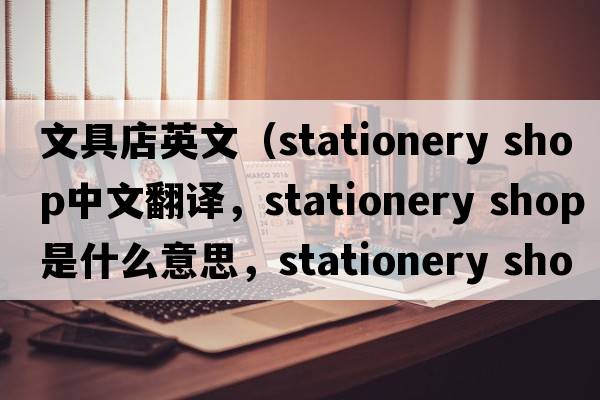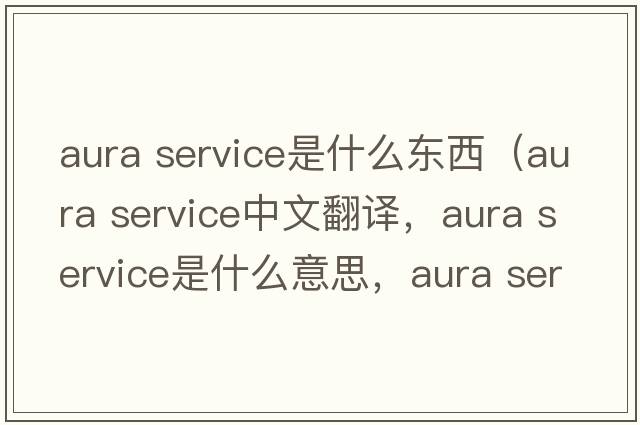functional group中文翻译,functional group是什么意思,functional group发音、用法及例句

- 内容导航:
- 1、functional group
- 2、请问:什么叫结晶结晶聚合物是什么意思
1、functional group
functional group发音
英: 美:
functional group中文意思翻译
常见释义:
[化学]官能团;功能组,功能基
functional group双语使用场景
1、Different functional group also brings different influence for the absorbance of alkali metal.───有机物官能团上的差异也将对碱金属元素的吸光度产生不同的影响.
2、CAC is a various functional group solvent which has no social effects of pollution.───乙二醇醚醋酸酯是具有多官能团的非公害溶剂.
3、The adsorption performance of activated carbon fibre ( ACF ) is closely related to its surface functional group.───活性炭纤维的吸附性能和其表面官能团密切相关.
4、close communication within such a cross-functional group will give you the sort of feel for the organizational practicalities that inform data architecture.───这样的跨功能组内进行亲密沟通,可以让您感受到可通过组织确定数据体系结构。
5、The CdTe - silica composite nanoparticles can be modified with functional group by grafting silane ligands in ethanol.───这些在醇相中的复合纳米粒子可以很容易地用硅烷偶联剂在其表面修饰上功能性的官能团.
6、I was helping a cross-functional group review a few ideas to create new growth businesses.───我正帮助一个跨职能小组审视一些想法,以创造新的业务增长。
7、The study probed the changes of alpine meadows in vegetation composition, diversity, functional group and productivity.───摘要本研究探讨了高寒草甸在不同划破强度下植被组成 、 多样性 、 功能群和生产力的变化.
8、Hydroformylation of the olefinic atom economic method th introduce new functional group in the oil compounds.───而通过双键的氢甲酰化反应引入新官能团能为油脂的化工利用提供了一条广阔的道路.
9、Within each database, the snapshot monitor collects information based on the functional group levels shown in Table 3.───在每个数据库中,快照监控器基于表3中所示的功能组层次收集信息。
10、Polyaspartic acid is easily ring - opened to form polyaspartic acid derivatives with a side chain functional group.───聚天冬氨酸具有比较好的反应活性,能够很容易被氨基开环生成具有功能基团侧链的聚天冬氨酸衍生物.
functional group相似词语短语
1、occupational group───职业人群
2、functional food───功能保健食品
3、functional groups───官能团;功能群;功能组
4、function room───功能厅;多功能厅;活动室;宴会厅;活动会议室
5、functional foods───功能性食品
6、function creep───函数蠕变
7、functional load───功用负荷量
8、functional loads───功用负荷量
9、action group───n.行动小组
2、请问:什么叫结晶结晶聚合物是什么意思
聚合物是通称一些非常长的分子,当中由结构单位和重覆单位经共价化学键连接一起。 (英文Polymer起源自希腊语中polys即"许多",meros即部分)。 聚合物与其它分子不同之处在於他们是由许多相同、相似或互补的亚单位重复所组成。这些亚单位或称单体是一些低至中等分子质量的分子,他们经聚合作用的化学反应便可组成聚合物。
相似的单体由於有不同的取代基,所以不会是完全相同的。由不同的单体组成的聚合物会有不同的特性例如:溶解度、弹性和强度。譬如在蛋白质里、这些差异使聚合物能形成其独特的生物活跃构象(参见自我组装)。当中相同单体如有非活泼的支链会导致聚合物链形成一无规线团——即根据数学模型所描述的理想链。虽然多数聚合物是有机化合物,并由碳基之单体所组成,但是也有无机聚合物例如,矽橡胶(又称硅树脂)是由交替的硅和氧原子所组成。
目录 [隐藏]
1 Polymer nomenclature
2 聚合物的物理性质
2.1 Branching
2.2 Stereoregularity
3 Constitution of polymers
3.1 Copolymers
4 Chemical properties of polymers
4.1 Intermolecular forces
4.2 Polymer characterization
5 See also
6 External links
[编辑]
Polymer nomenclature
Polymers are typically classified according to three main groups:
thermoplastics (linear or branched chains)
thermosets (crosslinked chains)
elastomers
Coordination polymers
The term polymer covers a large, diverse group of molecules, including substances from proteins to stiff, high-strength Kevlar fibres. For example, the formation of polyethene (also called polyethylene) involves thousands of ethene molecules bonded together to form a straight (or branched) chain of repeating -CH2-CH2- units (with a -CH3 at each terminal):
Polymers are often named in terms of the monomer from which they are made. Because it is synthesized from ethene in a process during which all the double bonds in the vinyl monomers are lost, polyethene has the unsaturated structure:
If it were named according to its final structure, it would have the alkane designation "polyethane".
Because synthetic polymer formation is governed by random assembly from the constituent monomers, polymer chains within a solution or substance are generally not of equal length. This is unlike basic, smaller molecules in which every atom is stoichiometrically accounted for, and each molecule has a set molecular mass. An ensemble of differing chain lengths, often obeying a normal (Gaussian) distribution, occurs because polymer chains terminate during polymerization after random amounts of chain lengthening (propagation).
Proteins are polymers of amino acids. Typically, hundreds of the (nominally) twenty different amino acid monomers make up a protein chain, and the sequence of monomers determines its shape and biological function. (There are also shorter oligopeptides which function as hormones.) But there are active regions, surrounded by, as is believed now (Aug 2003), structural regions, whose sole role is to expose the active regions. (There may be more than one on a given protein.) So the exact sequence of amino acids in certain parts of the chains can vary from species to species, and even given mutations within a species, so long as the active sites are properly accessible. Also, whereas the formation of polyethylene occurs spontaneously under the right conditions, the synthesis of biopolymers such as proteins and nucleic acids requires the help of enzyme catalysts, substances that facilitate and accelerate reactions. Unlike synthetic polymers, these biopolymers have exact sequences and lengths. (This does not include the carbohydrates.) Since the 1950s, catalysts have also revolutionised the development of synthetic polymers. By allowing more careful control over polymerization reactions, polymers with new properties, such as the ability to emit coloured light, have been manufactured.
[编辑]
聚合物的物理性质
聚合物的物理性质包括聚合度,分子量分布,结晶度和相转变等,详见高分子物理学。
[编辑]
Branching
See also: Branching (chemistry)
During the propagation of polymer chains, branching can occur. In free-radical polymerization, this occurs when a chain curls back and bonds to an earlier part of the chain. When this curl breaks, it leaves small chains sprouting from the main carbon backbone. Branched carbon chains cannot line up as close to each other as unbranched chains can. This causes less contact between atoms of different chains, and fewer opportunities for induced or permanent dipoles to occur. A low density results from the chains being further apart. Lower melting points and tensile strengths are evident, because the intermolecular bonds are weaker and require less energy to break.
Besides branching, polymers can have other topologies: linear, network (cross-linked 3D structure), IPN (integrated polymer network), comb, or star as well as dendrimer and hyperbranched structures.
[编辑]
Stereoregularity
Stereoregularity or tacticity describes the isomeric arrangement of functional groups on the backbone of carbon chains. Isotactic chains are defined as having substituent groups aligned in one direction. This enables them to line up close to each other, creating crystalline areas and resulting in highly rigid polymers.
In contrast, atactic chains have randomly aligned substituent groups. The chains do not fit together well and the intermolecular forces are low. This leads to a low density and tensile strength, but a high degree of flexibility.
Syndiotactic substituent groups alternate regularly in opposite directions. Because of this regularity, syndiotactic chains can position themselves close to each other, though not as close as isotactic polymers. Syndiotactic polymers have better impact strength than isotactic polymers because of the higher flexibility resulting from their weaker intermolecular forces.
[编辑]
Constitution of polymers
[编辑]
Copolymers
Copolymerization with two or more different monomers results in chains with varied properties. There are twenty amino acid monomers whose sequence results in different shapes and functions of protein chains. Copolymerising ethene with small amounts of 1-hexene (or 4-methyl-1-pentene) is one way to form linear low-density polyethene (LLDPE). (See polyethylene.) The C4 branches resulting from the hexene lower the density and prevent large crystalline regions from forming within the polymer, as they do in HDPE. This means that LLDPE can withstand strong tearing forces while maintaining flexibility.
A block copolymer is formed when the reaction is carried out in a stepwise manner, leading to a structure with long sequences or blocks of one monomer alternating with long sequences of the other. There are also graft copolymers, in which entire chains of one kind (e.g., polystyrene) are made to grow out of the sides of chains of another kind (e.g., polybutadiene), resulting in a product that is less brittle and more impact-resistant. Thus, block and graft copolymers can combine the useful properties of both constituents and often behave as quasi-two-phase systems.
The following is an example of step-growth polymerization, or condensation polymerization, in which a molecule of water is given off and nylon is formed. The properties of the nylon are determined by the R and R' groups in the monomers used.
Image:Con polymer.png
The first commercially successful, completely synthetic polymer was nylon 6,6, with alkane chains R = 4C (adipic acid) and R' = 6C (hexamethylene diamine). Including the two carboxyl carbons, each monomer donates 6 carbons; hence the name. In naming nylons, the number of carbons from the diamine is given first and the number from the diacid second. Kevlar is an aromatic nylon in which both R and R' are benzene rings.
Copolymers illustrate the point that the repeating unit in a polymer, such as a nylon, polyester or polyurethane, is often made up of two (or more) monomers.
[编辑]
Chemical properties of polymers
[编辑]
Intermolecular forces
The attractive forces between polymer chains play a large part in determining a polymer's properties. Because polymer chains are so long, these interchain forces are amplified far beyond the attractions between conventional molecules. Also, longer chains are more amorphous (randomly oriented). Polymers can be visualised as tangled spaghetti chains - pulling any one spaghetti strand out is a lot harder the more tangled the chains are. These stronger forces typically result in high tensile strength and melting points.
The intermolecular forces in polymers are determined by dipoles in the monomer units. Polymers containing amide groups can form hydrogen bonds between adjacent chains; the positive hydrogen atoms in N-H groups of one chain are strongly attracted to the oxygen atoms in C=O groups on another. These strong hydrogen bonds result in, for example, the high tensile strength and melting point of kevlar. Polyesters have dipole-dipole bonding between the oxygen atoms in C=O groups and the hydrogen atoms in H-C groups. Dipole bonding is not as strong as hydrogen bonding, so ethene's melting point and strength are lower than Kevlar's, but polyesters have greater flexibility.
Ethene, however, has no permanent dipole. The attractive forces between polyethene chains arise from weak van der Waals forces. Molecules can be thought of as being surrounded by a cloud of negative electrons. As two polymer chains approach, their electron clouds repel one another. This has the effect of lowering the electron density on one side of a polymer chain, creating a slight positive dipole on this side. This charge is enough to actually attract the second polymer chain. Van der Waals forces are quite weak, however, so polyethene melts at low temperatures.
[编辑]
Polymer characterization
The characterization of a polymer requires several parameters which need to be specified. This is because a polymer actually consists of a statistical distribution of chains of varying lengths, and each chain consists of monomer residues which affect its properties.
A variety of lab techniques are used to determine the properties of polymers. Techniques such as wide angle X-ray scattering, small angle X-ray scattering, and small angle neutron scattering are used to determine the crystalline structure of polymers. Gel permeation chromatography is used to determine the number average molecular weight, weight average molecular weight, and polydispersity. FTIR is used to determine composition. Thermal properties such as the glass transition temperature and melting point can be determined by differential scanning calorimetry and dynamic mechanical analysis. Pyrolysis followed by analysis of the fragments is one more technique for determining the possible structure of the polymer.
Polymer known as polymer substrate is used for everyday banknotes in Australia, Romania, Papua New Guinea, Samoa, Zambia, Vietnam, New Zealand and a few others, and the material is also used in commemorative notes in some other countries. The process of polymer substrate creation was developed by the Australia CSIRO.
版权声明: 本站仅提供信息存储空间服务,旨在传递更多信息,不拥有所有权,不承担相关法律责任,不代表本网赞同其观点和对其真实性负责。如因作品内容、版权和其它问题需要同本网联系的,请发送邮件至 举报,一经查实,本站将立刻删除。














